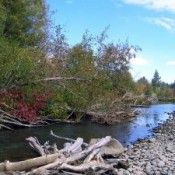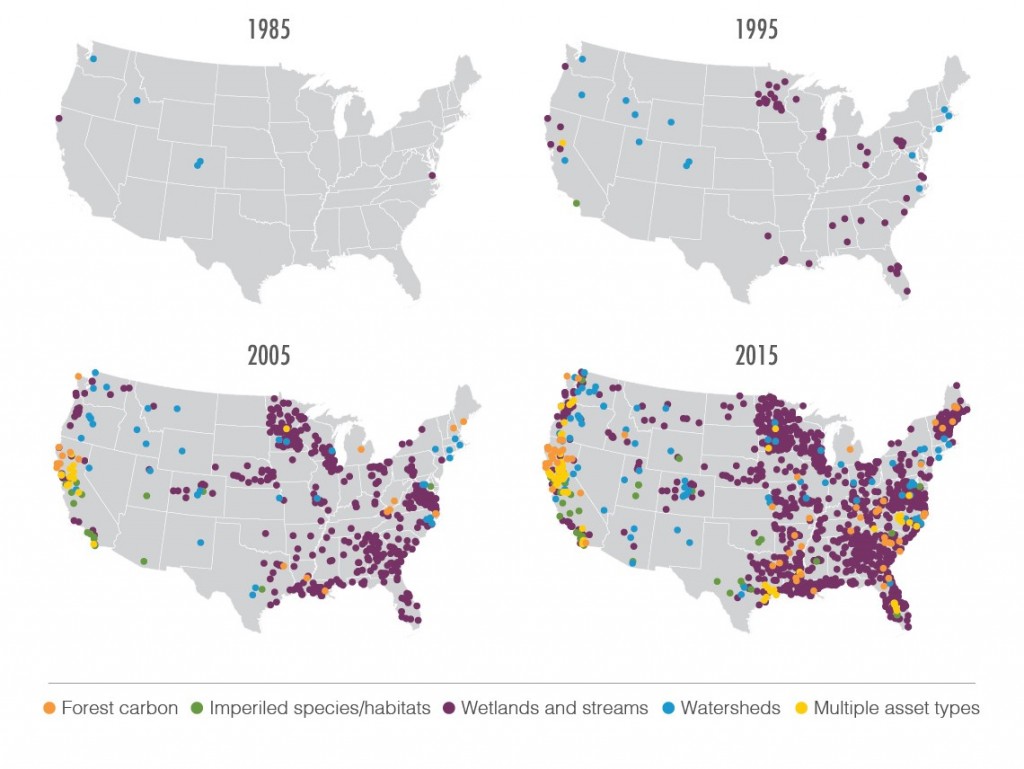New California Law Recognizes Meadows, Streams As “Green Infrastructure”, Eligible For Public Works Funding
As degraded watersheds drag California into its sixth year of drought, a new law makes forests, farms, and fields eligible for infrastructure funding – and the state is hardly alone, according to new research by Ecosystem Marketplace, which shows a dramatic surge in payments for watershed services across the United States and around the world.

20 October 2016| The US state of California has spent the better part of the last hundred years cobbling together a massive network of pipes, pumps, and aqueducts that today suck water from remote rivers in angry parts of distant states up over high mountains down through dry valleys and into the Southern part of the state. It’s a technological and engineering wonder – one the Romans would envy – but it’s only as good as the forests and catchments that mop up that water and filter it for human consumption, and those ecosystems are increasingly under pressure.
So, with the state entering its sixth year of drought, Governor Jerry Brown last month signed a landmark law, Assembly Bill 2480, declaring that “source watersheds are recognized and defined as integral components of California’s water infrastructure.” In so doing, he made it possible to funnel billions of dollars in infrastructure finance towards the restoration of forests and the maintenance of meadows, streams and rivers – echoing a similar move by Peru last year and accelerating a decades-old trend towards the use of “natural infrastructure” to manage water supplies.
Indeed, preliminary findings from Ecosystem Marketplace’s State of Watershed Investments 2016 report, slated for release in early 2017, identify at least 95 initiatives in the United States funneling at least $3.8 billion into watershed conservation, and the global figures are multiples of that. Meanwhile, a recent mapping initiative launched this month shows dramatic increases in all payments for ecosystem services.
“It’s a major shift in the way we think about conservation – nature isn’t just ‘nice to have’ but an absolutely critical piece of our water infrastructure systems,” says Genevieve Bennett, Senior Associate at Ecosystem Marketplace and report author. “There are hundreds of communities all over the world who understood that years ago, and started figuring out how to make sure they were protecting their water sources. And now we’re starting to see that concept making its way into higher-level policy.”
Growth in Ecosystem Markets Initiatives

Rethinking Water Infrastructure
The state’s legislators will determine how much water infrastructure funding will flow toward watershed projects in five critical California watersheds. These five watersheds supply 25 million people with drinking water, irrigate 8 million acres of farmland and provide 85 percent of the water to San Francisco Bay.
“The issue of adequate investment in the state’s source watersheds has been a regular topic in water discussions for many years,” says Jim Branham, the Executive Officer at the Sierra Nevada Conservancy, a California state agency focused on sustainable management of the Sierra Nevada region.
Prior to AB 2480, there was little legislation that specifically recognized the key functions of source watersheds. But Branham says issues such as the state’s lingering drought, tree mortality and catastrophic wildfire brought the challenges facing forested watersheds to the fore. In 2013, for instance, the Rim Fire tore through 250,000 acres of Sierra Nevada forestland racking up a USD 55 million bill in water infrastructure repairs for San Francisco’s water utility.
“The severity of some of the issues related to water is causing folks in California to realize we need to think about things differently,” says Kerstin James, Senior Manager of California Policy and Partnerships at the nonprofit Ceres.
People realizing their dependence on ecosystems for clean water was a key factor in creating AB 2480.
“California has stretched its water supplies to the breaking point and we recognized that the likely least costly and most effective way to increase the reliability and quality, as well as quantity, was to address chronic, critical degraded conditions threatening the primary source watersheds,” says Laurie Wayburn, the President of conservation group Pacific Forest Trust. Wayburn was heavily involved in the law’s creation and Pacific Forest Trust was a sponsor of the bill.
Branham and James also credit the bill’s approval to constant advocacy work from conservation groups to secure statutory language on watershed investments.
The bill is short, a couple paragraphs, with sparse details on how state officials will roll out the restoration activities. Branham admits it’s difficult to tell how successful this law will be or what kind of an impact it will have. However, it’s better to have this language in statute than not when making investment decisions, he says.
James agrees and says there is opportunity in this policy to take watershed investments to the next level despite its brevity.
The Range of Watershed Investments
Just a few short months before California’s governor signed its groundbreaking legislation, Peru, which with the world’s second-largest desert city, Lima, struggles with water scarcity, released some groundbreaking policy of its own. In 2014, Peru established the Mecanismos de Retribución por Servicios Ecosistémicos (MRSEs), or “Mechanisms of Compensation for Ecosystem Services” law and over the summer, they issued formal regulations for it. The law created a legal framework for conservation activities that harness public and private capital, and the new regulations offer clear guidance on how to implement them.
This law embracing nature-based solutions is just one part of a nationwide shift toward green infrastructure in Peru. In June of 2015, Peru’s government announced it was funneling millions of Lima’s water fees into green infrastructure programs including one that restored ancient structures for storing and managing water.
The government also mandated that over the next three years all 50 water utilities in Peru are expected to compliment gray engineering with green interventions. The services ecosystems provide limit the need for engineered gray infrastructure such as a water treatment plant. However it doesn’t extinguish the need for gray entirely.
Peru is a hotbed of investment activity in green infrastructure though Ecosystem Marketplace’s upcoming report summarizes several other parts of the world where investment is also happening. For instance, public and private partners, with funding from The Nature Conservancy, launched Africa’s first water fund, which focuses on a major source of water for Nairobi, the Tana River Basin. China is pursuing an “ecological civilization” that requires the nation to scale up public finance for watershed protection and restoration. It’s close to achieving its goal of 25% forest cover nationwide by 2020, largely though logging limit policies and a program to reforest sloping farmland. There is some concern, however, that deforestation has simply shifted to outside of China.
In the US West, the Forest Service and other federal agencies are partnering with state land managers, businesses and communities to counter increasingly more catastrophic wildfires, which can have detrimental effects on water resources, by investing in healthy forests that burn less intensely.
Can Watershed Investments Scale Up?
Despite this growth, Bennett says watershed investment programs are facing significant challenges, many of which are the same problems they reported in the State of Watershed Investment 2014 report. These include a lack of regulatory support, difficulty in building local relationships, legal barriers to investing in natural capital and a struggle to develop technical capacities.
Ultimately, Bennett writes in the 2014 report, getting watershed investments to scale involves moving the practice out of the conservation niche and into a position where decision-makers view it as a strategic investment to supporting current and future water demands.
Steve Crooks, a longtime wetland scientist and Principal at the San Francisco-based consultancy Silvestrum Climate Associates says he sees this shift among policymakers. Noting California’s law and last year’s Executive Order mandating that all federal agencies incorporate natural infrastructure into their decision-making, Crooks says both state and national government are moving towards applying more holistic landscape planning.
“Can we say that old traditional ways of engineering landscapes are dead,” Crooks asks. “No, but we do seem to be moving in the right direction.”
Please see our Reprint Guidelines for details on republishing our articles.

